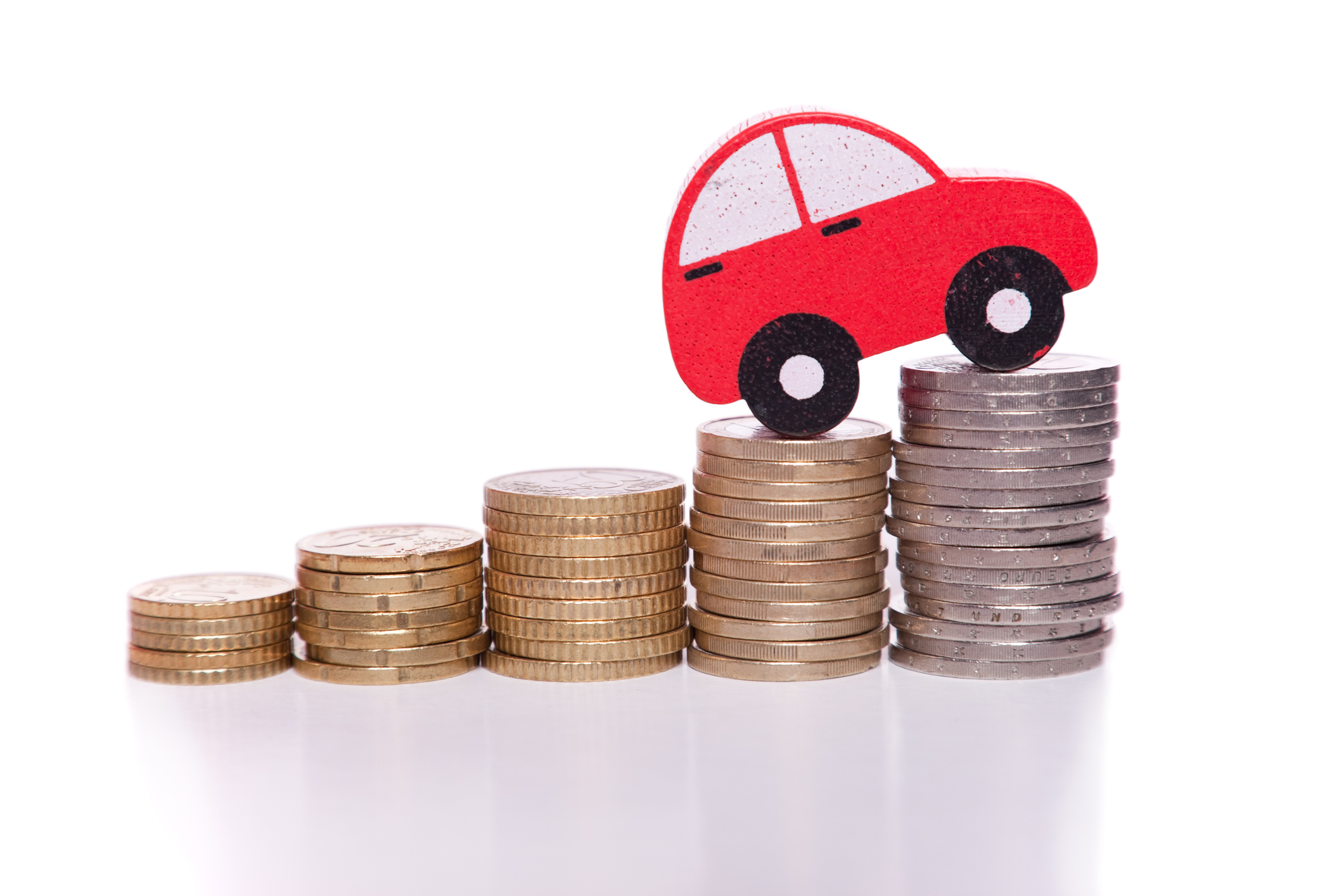Collision vs Comprehensive Car Insurance: Which Do You Need?
When considering car insurance policies, do you need comprehensive or collision coverage? Here are instances where adding both makes sense.

If you plan to finance or lease a vehicle, your lender requires full coverage auto insurance. Two components of full coverage are collision and comprehensive car insurance.
Even if you own your vehicle, both of these policies offer financial protection you might need if you're in an accident. Say you accidentally hit a pole causing damage to your car. In the event you don't have collision insurance, you would have to pay for the repairs out of pocket.
Here’s what you need to know about collision vs comprehensive car insurance and whether or not you need it.
From just $107.88 $24.99 for Kiplinger Personal Finance
Become a smarter, better informed investor. Subscribe from just $107.88 $24.99, plus get up to 4 Special Issues

Sign up for Kiplinger’s Free Newsletters
Profit and prosper with the best of expert advice on investing, taxes, retirement, personal finance and more - straight to your e-mail.
Profit and prosper with the best of expert advice - straight to your e-mail.
Collision vs comprehensive car insurance
Collision insurance: If you are involved in a car accident with another vehicle, regardless of who is at fault, collision coverage will pay for any damages to your own vehicle. If you get into a single-car accident, collision coverage will cover damages to your car in that case as well. For example, if you hit a street sign or pole, collision insurance will cover those damages.
However, collision coverage is usually expensive to add to your car insurance policy. Collision coverage costs an average of $814 per year, according to Forbes. While the price is high, it could end up saving you money in the long run. If you do get into an accident and damage your vehicle, you'll only have to pay your deductible.
Comprehensive insurance: Comprehensive insurance covers your vehicle up to its actual cash value for non-collision accidents. This includes damage from severe weather, like flood, hail or fire, vandalism, theft, falling objects and collision with an animal. Comprehensive coverage is generally cheaper than collision coverage, costing, on average, $367 a year, according to Forbes.
If you live in an area with high levels of crime where a break in or theft is likely to occur, live somewhere prone to flooding or live in a rural area where the odds of hitting a deer are quite high, you may need comprehensive insurance more than other drivers.
Combined collision and comprehensive Coverage: Many drivers find it worthwhile to have both collision and comprehensive coverage, as each protects against different types of risks. Collision coverage helps cover the cost of damages if you're in an accident, while comprehensive coverage protects against non-collision incidents like theft, weather damage, and vandalism.
Combined, they offer more extensive financial protection, which is especially valuable if you own a newer, high-value vehicle. For such vehicles, bundled coverage can provide peace of mind, knowing you're protected on and off the road.
Below you can use our tool to get personalized rates from top carriers today.
Which do you need?
Roughly 80% of insured drivers purchase comprehensive coverage in addition to liability insurance, and 76% purchase collision coverage.
However, if you own your vehicle, you'll have the option to forgo comprehensive and collision coverage if you decide you don't need it. Here's what to consider.
— Can you afford to repair any damages to your vehicle that may happen as a result of an accident? If your car gets stolen, can you afford to purchase a new vehicle? If not, adding comprehensive and/or collision coverage to your policy can provide financial protection if either of these events occur.
— How much is your vehicle worth? In some cases, adding collision or comprehensive coverage to your policy isn’t worth it. Collision and comprehensive insurance covers up to the actual cash value of your vehicle, minus the deductible. So if you have an old car, you’ll likely end up paying more money in premiums than the amount of money you’ll get back from the insurer. For this reason, dropping collision coverage on older vehicles can help you save on your auto insurance premium.
Related Content
Profit and prosper with the best of Kiplinger's advice on investing, taxes, retirement, personal finance and much more. Delivered daily. Enter your email in the box and click Sign Me Up.

Erin pairs personal experience with research and is passionate about sharing personal finance advice with others. Previously, she was a freelancer focusing on the credit card side of finance, but has branched out since then to cover other aspects of personal finance. Erin is well-versed in traditional media with reporting, interviewing and research, as well as using graphic design and video and audio storytelling to share with her readers.
-
 Dow Adds 292 Points as Goldman, Nvidia Soar: Stock Market Today
Dow Adds 292 Points as Goldman, Nvidia Soar: Stock Market TodayTaiwan Semiconductor's strong earnings sparked a rally in tech stocks on Thursday, while Goldman Sachs' earnings boosted financials.
-
 Why Public Markets Don't Look Like They Used To
Why Public Markets Don't Look Like They Used To -
 Turning 65 in 2026? Here Is Exactly How to Sign Up for Medicare
Turning 65 in 2026? Here Is Exactly How to Sign Up for MedicareWhether you’re months away from your 65th birthday or plan to work past retirement age, here are the steps to secure your Medicare coverage and avoid costly mistakes.
-
 Is Home Insurance Tax Deductible?
Is Home Insurance Tax Deductible?With home insurance rates on the rise, you might be hoping to at least claim the cost as a tax deduction. Here's what you need to know ahead of tax season.
-
 Is Mechanical Breakdown Insurance Better Than an Extended Car Warranty?
Is Mechanical Breakdown Insurance Better Than an Extended Car Warranty?More insurers are starting to offer mechanical breakdown insurance to new car owners. What is it and should you buy it?
-
 9 Types of Insurance You Probably Don't Need
9 Types of Insurance You Probably Don't NeedFinancial Planning If you're paying for these types of insurance, you may be wasting your money. Here's what you need to know.
-
 My Teen Crashed His Car, and Now Our Insurance Has Tripled. What Now?
My Teen Crashed His Car, and Now Our Insurance Has Tripled. What Now?Dealing with the costly aftermath of a teen car accident is stressful. Here are your options for navigating it.
-
 Your End of Year Insurance Coverage Review Checklist
Your End of Year Insurance Coverage Review ChecklistStop paying for insurance you don't need and close coverage gaps you didn't know about with this year-end insurance review.
-
 Snowbirds: Avoid These 3 Sneaky Insurance Issues
Snowbirds: Avoid These 3 Sneaky Insurance IssuesBefore snowbirds depart for their winter retreat, they should check their insurance coverage for surprises that might arise, or else be on the hook for repairs.
-
 10 Things You Should Know About Buying a Car Today, Even if You've Bought Before
10 Things You Should Know About Buying a Car Today, Even if You've Bought BeforeIf buying a car is on your to-do list, and it's been a while since you went shopping for a new one, this guide will help avoid any nasty shocks in the showroom.
-
 Loyalty Doesn’t Pay: Why Your Car Insurance Keeps Going Up
Loyalty Doesn’t Pay: Why Your Car Insurance Keeps Going UpYou’ve been a good customer, now your premium is creeping up. Here’s why loyalty might be costing you on car insurance.